In the ever-evolving world of indoor greenery, the spotlight is increasingly shifting towards a category of plants that can thrive in the shadows. These low-light indoor plants redefine the possibilities for urban dwellers and modern homeowners. Whether you're adorning your cozy apartment or sprucing up your minimalist office, these green companions can flourish in spaces where natural light is at a premium.
In this blog post, we share some of the best low-light indoor plants that don't require bright light. In addition, we will help you uncover their distinctive features, care tips, and how they can effortlessly brighten up your space even in the most challenging light conditions.
What Is Considered Low Light For Indoor Plants
Low-light plants thrive in indirect, filtered, or subdued lighting, avoiding direct light. Such environments are typical in rooms with north-facing windows, areas shaded by buildings or trees, or corners with minimal direct sunlight but ample bright indirect light. These settings provide natural light while shielding the plants from the intense rays of direct sun, which can harm them. It's essential to recognize that 'low light' does not mean 'no light'; even low-light plants require a certain degree of natural or artificial light to maintain their health and growth.
Best Low Light Indoor Plants
Snake Plants

The Snake Plant, or Sansevieria, is an ideal low-light indoor plant for enhancing modern homes. Its distinctive, upright leaves with striking patterns add an elegant touch to any room.
Apart from their visual charm, Snake Plants are recognized for their air-purifying capabilities, rendering them a practical and beneficial addition to living spaces. Their care is straightforward and low-maintenance. Preferring dry soil, they require watering only occasionally every few weeks and are forgiving of irregular watering. This resilience, combined with their ability to prosper in indirect light, establishes the Snake Plant as a superb option for those seeking a balance of visual appeal and ease of care in their indoor greenery.
Peace Lily

The Peace Lily, known scientifically as Spathiphyllum, is celebrated for its ability to thrive in low-light conditions. It is a suitable choice for areas in homes that receive indirect sunlight. The elegant white blooms and luxuriant green leaves contribute a serene and sophisticated touch to any indoor space.
In addition to its visual appeal, Peace Lilies are recognized for their air-purifying qualities, contributing to a healthier living environment. Care for Peace Lilies is relatively simple; they require consistent but moderate watering with moist soil. They also benefit from high humidity and occasional misting.
ZZ Plant
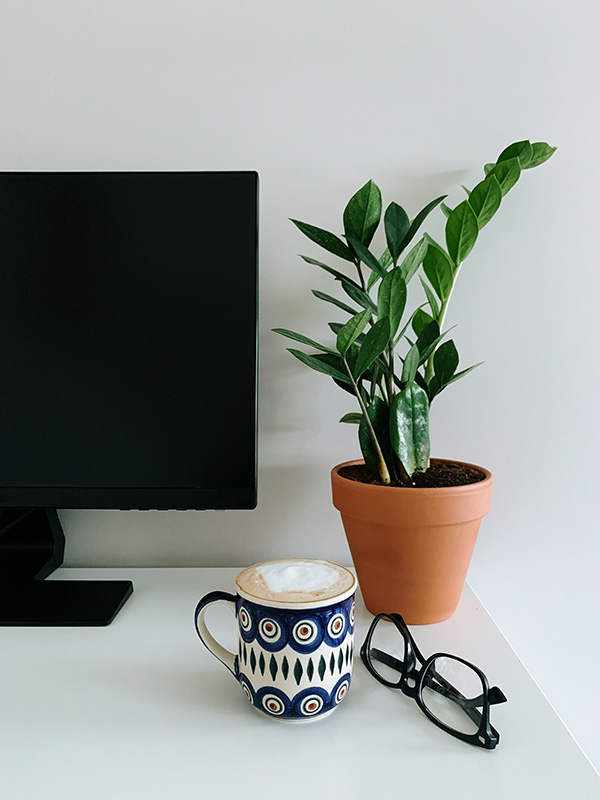
The ZZ Plant, known for its glossy, emerald-green leaves, is a top contender for one of the best low-light indoor plants. It excels in environments with indirect light, making it a perfect match for modern interior aesthetics. This plant thrives in dimly lit areas, surpassing others in adapting to subdued lighting conditions. Its ability to withstand drought and minimal care needs make it an ideal choice for plant enthusiasts with busy schedules.
The ZZ Plant's robustness and adaptability to indirect light are key to its popularity among those seeking a low-maintenance yet stylish green addition to contemporary living spaces. Its timeless appeal and effortless care resonate with the trend towards understated elegance in home decor.
Pothos
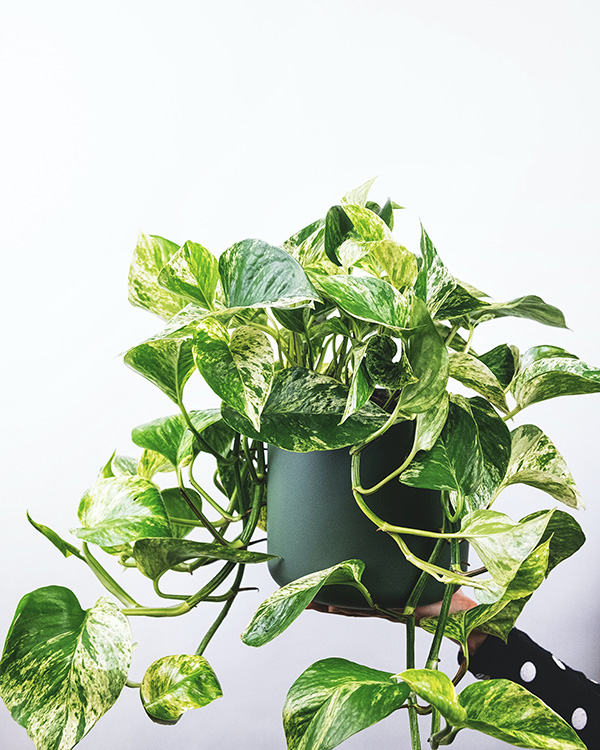
Pothos stands out as a frontrunner among low-light houseplants. The cascading vines and heart-shaped leaves impart a timeless charm to interior decor. Thriving in conditions where many other plants falter, it excels in low to moderate light. Its low-maintenance nature aligns perfectly with the preferences of busy individuals, requiring minimal attention and irregular watering.
The adaptability of Pothos to diverse indoor environments, including dimly lit corners, positions it as an ideal choice. Beyond its aesthetic appeal, it is recognized for its air-purifying qualities, contributing to improved indoor air quality. With its unique style and practicality, Pothos has established itself as a versatile and enduring addition to modern living spaces.
Dracaena
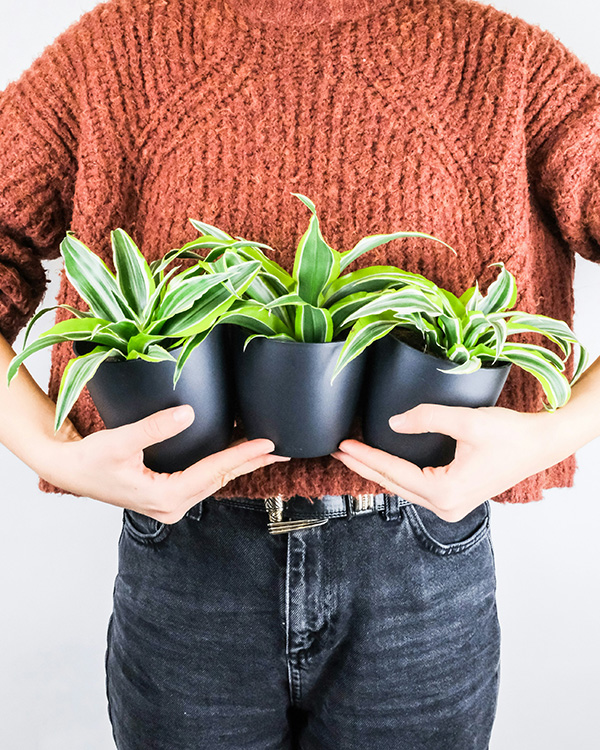
Dracaena, a versatile genus of houseplants, emerges as an excellent choice for indoor environments without a lot of bright light. The upright stems and diverse foliage patterns provide a stylish touch to contemporary interiors.
Dracaena's remarkable adaptability to low light sets it apart, making it a prime pick for dimly lit spaces. Its low-maintenance nature requires minimal care and infrequent watering, aligning perfectly with homeowners' seeking both aesthetics and practicality. Dracaena not only adds visual appeal but also contributes to improved indoor air quality, enhancing the ambiance of living spaces.
Cast Iron Plant
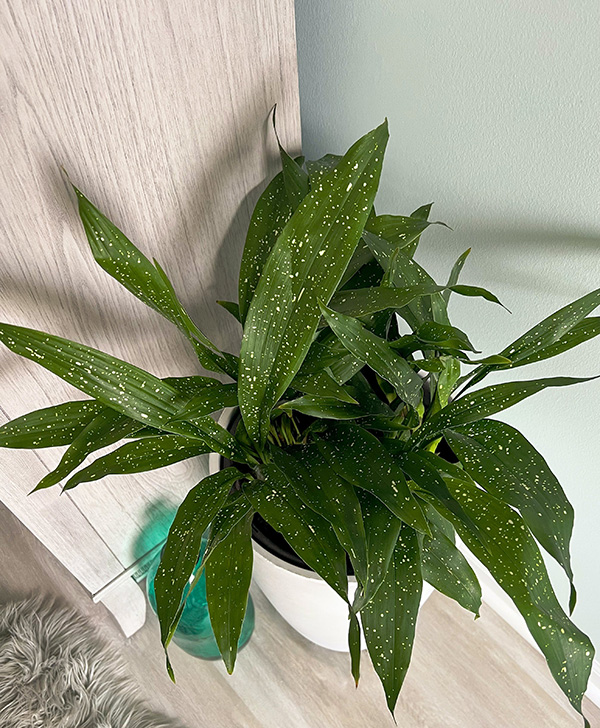
The Cast Iron Plant, or Aspidistra elatior, earns its name from its remarkable resilience, making it an ideal choice for low-light homes. This hardy plant thrives in areas where other house plants might falter, particularly in spaces with indirect or minimal light. Its lush, deep green foliage brings a touch of robust, natural beauty to any indoor setting.
As for its care, the Cast Iron Plant is notably low-maintenance. Preferring well-drained soil and needing infrequent watering, it tolerates sporadic care without compromising health. This plant is also resistant to temperature fluctuations, adding to its versatility. For those seeking a durable, attractive, and easy-to-care-for indoor plant, the Cast Iron Plant stands out as a robust and dependable option, ideal for enhancing various living spaces.
Chinese Evergreen
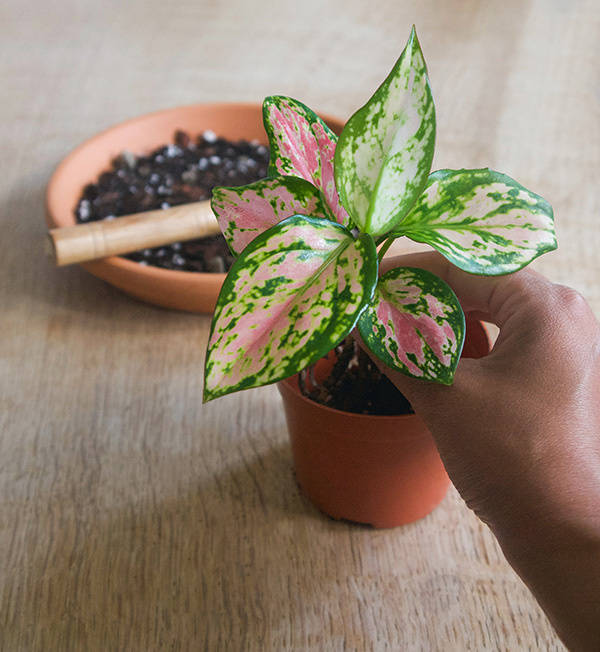
The Chinese Evergreen, scientifically known as Aglaonema, is a distinguished choice for a low-light houseplant, enhancing home environments with its lush foliage and ornamental appeal.
Excelling in areas with indirect light, this plant is a versatile addition to spaces that may not benefit from abundant natural sunlight. Its leaves, often variegated with shades of green, silver, or red, provide a vibrant splash of color, enlivening any room.
In terms of care, the Chinese Evergreen is notably low-maintenance. It prefers well-drained soil and moderate watering, thriving in moist but not waterlogged conditions. Additionally, it is tolerant of average indoor humidity and temperatures. This combination of aesthetic beauty, light requirement, and straightforward care requirements makes the Chinese Evergreen a top choice for those seeking to enrich their living spaces with a durable and attractive indoor plant.
Spider Plant

The Spider Plant, scientifically termed Chlorophytum comosum, is an exceptional choice for a low-light houseplant, seamlessly integrating into various home environments.
Renowned for its adaptability, the Spider Plant thrives in indirect light, making it perfect for areas away from direct sunlight. Its distinctive appearance, characterized by arching leaves and small plantlets, adds a lively and refreshing touch to any indoor space.
In terms of care, the Spider Plant is notably low-maintenance. It thrives in well-drained soil and only requires occasional watering, tolerating periods of dryness. This plant also fares well in average room temperatures and humidity levels. The combination of its striking appearance, adaptability, and minimal care needs establishes the Spider Plant as a prime choice for adding greenery to homes, particularly for those seeking a hassle-free and visually appealing indoor plant.
Boston Fern

The Boston Fern, known scientifically as Nephrolepis exaltata, stands out as a top choice for a low-light houseplant. This plant's lush, feathery fronds create an aura of natural elegance, making it a striking addition to any indoor space.
Ideally suited for areas with indirect light, the Boston Fern thrives in environments that mimic its native understory habitats. Its care routine is straightforward, with a preference for consistently moist soil and regular misting to maintain a humid environment, mirroring its tropical origins.
The plant also benefits from being placed away from direct heat sources. Its adaptability to lower light conditions, distinctive appearance, and specific yet manageable care requirements position the Boston Fern as a prime selection for enhancing homes with a touch of verdant, easy-to-maintain greenery.
Parlor Palm
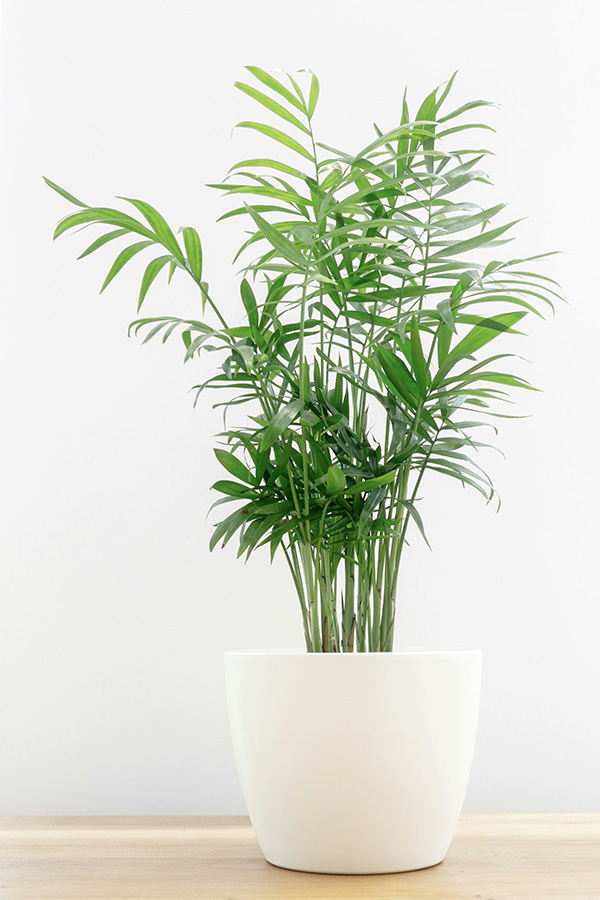
The Parlor Palm, botanically known as Chamaedorea elegans, is an exemplary low-light houseplant celebrated for its adaptability and graceful appearance. Originating from the rainforest understory, it thrives in indirect light, making it a perfect fit for less sunny spots in the home. Its elegant, arching fronds create a tranquil, tropical ambiance, enhancing any room's aesthetic.
Care-wise, the Parlor Palm is undemanding. Preferring well-drained soil and receiving consistent but moderate watering benefits the soil by allowing it to dry slightly between watering sessions. Moreover, this plant showcases tolerance to average indoor temperatures and humidity, contributing to its overall versatility. The Parlor Palm's ability to flourish in lower light conditions, combined with its low maintenance requirements and sophisticated look, make it a distinguished choice for bringing a touch of nature's tranquility indoors.
Heartleaf Philodendron
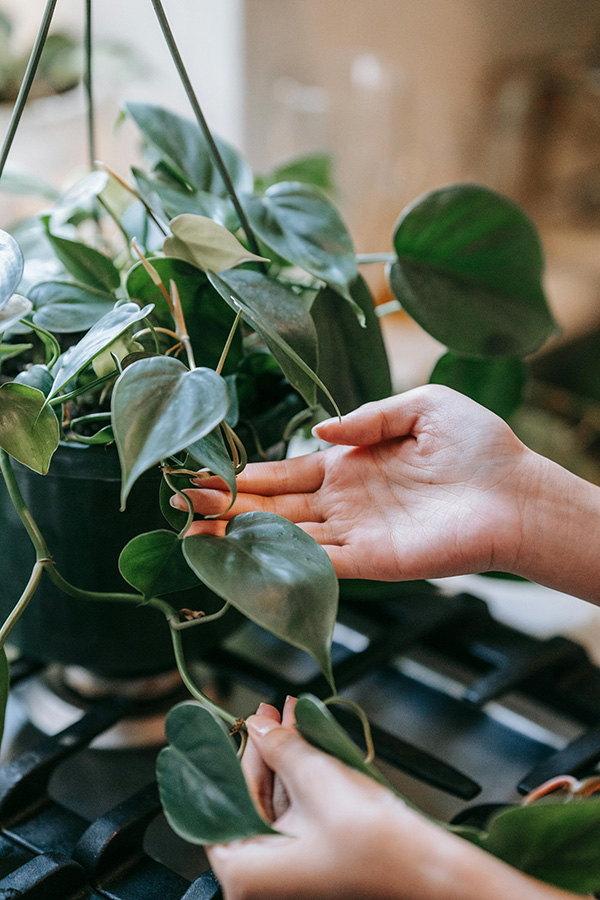
The Heartleaf Philodendron, scientifically called Philodendron hederaceum, secures its position among the top low-light houseplants, offering timeless charm to modern interiors. Its gracefully trailing heart-shaped leaves add a touch of greenery to various indoor settings.
Thriving in dimly lit spaces where other plants may falter, it's well-suited for homes with limited light. Low-maintenance and requiring minimal care, the Heartleaf Philodendron aligns perfectly with homeowners' preferences, seeking both aesthetics and practicality.
Moreover, it contributes to enhanced indoor air quality, elevating the overall ambiance of living spaces. With its adaptability to lower light and enduring appeal, the Heartleaf Philodendron is a reliable and stylish choice for contemporary home decor, injecting life into even the darkest corners.
Chinese Money Plant
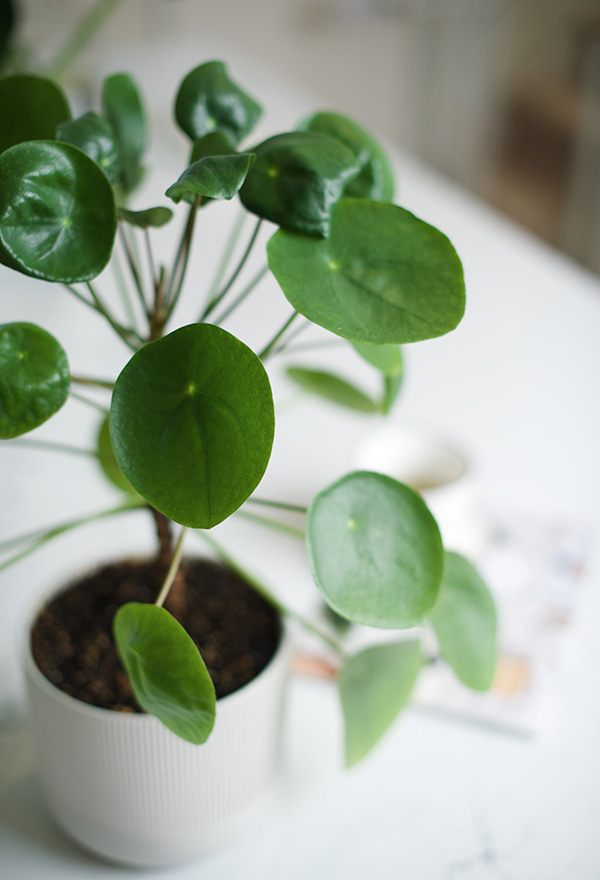
The Chinese Money Plant, scientifically named Pilea peperomioides, is highly regarded as a superior choice for a low-light houseplant. Its distinct round, coin-like leaves mounted on slender stems give it a unique, eye-catching appearance, well-suited to contemporary home decor. This plant is notably adept at thriving in bright indirect light, making it a suitable addition to areas in the home that don't receive direct sunlight. Regarding its care, the
The Chinese Money Plant is relatively low-maintenance. Preferring well-drained soil and moderate watering benefits from allowing the soil to dry out slightly between waterings. The plant also adapts well to standard indoor temperatures and humidity levels. Its ability to prosper in lower light conditions, combined with its distinctive aesthetic and easy care, positions the Chinese Money Plant as an excellent choice for adding a touch of stylish greenery to various indoor settings.
Dieffenbachia

Dieffenbachia, commonly known as the Dumb Cane, is an exceptional houseplant for a low-light environment. Its large, variegated leaves, patterned with a blend of green, white, and yellow, bring a vibrant, tropical aesthetic to any indoor space.
Thriving in indirect light, Dieffenbachia is ideal for areas away from direct sunlight, making it a versatile addition to homes. In terms of care, this plant demands moderate attention. It prefers well-drained soil and consistent moisture but is forgiving if occasionally underwatered. Dieffenbachia also adapts well to average room temperatures and enjoys a humid environment but can tolerate less humid conditions. Its striking appearance, adaptability to bright indirect light areas, and manageable care needs make Dieffenbachia a top choice for those looking to enhance their living spaces with a robust and visually appealing plant.
Maidenhair Fern
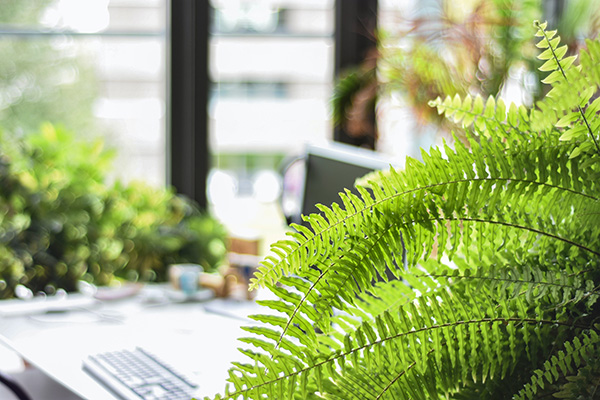
The Maidenhair Fern, known scientifically as Adiantum, is a distinguished choice for a low-light houseplant, offering a delicate and refined touch to indoor spaces. Its feathery, light green fronds create an air of elegance and serenity, making it a popular choice for spaces that receive indirect sunlight.
Care for the Maidenhair Fern includes maintaining consistently moist soil without waterlogging and ensuring high humidity, which can be achieved with regular misting. It also prefers a cooler environment, away from direct heat sources. The combination of its graceful beauty, suitability for indirect light areas, and specific but manageable care requirements makes the Maidenhair Fern an excellent option for those seeking a delicate and visually appealing addition to their home.
Bamboo Palm
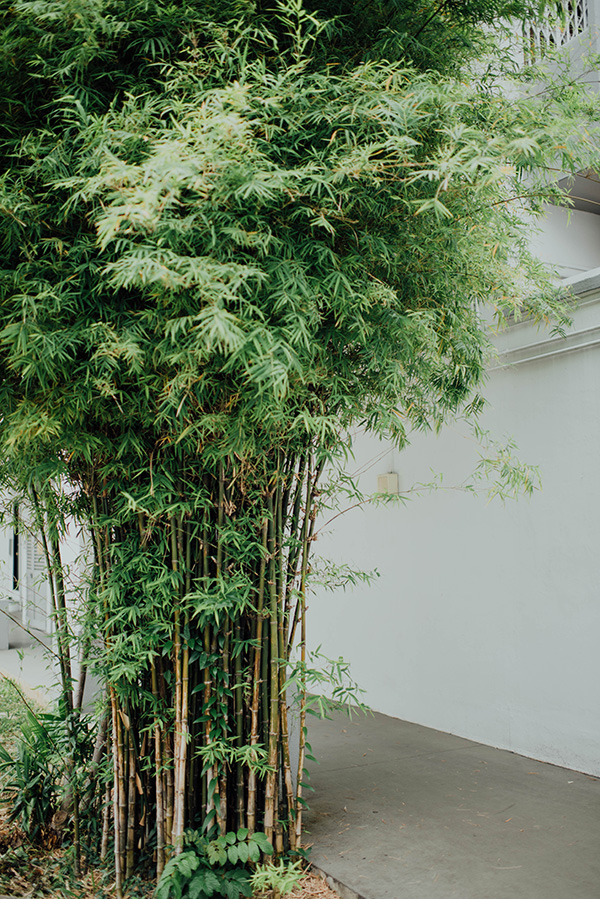
The Bamboo Palm, or Chamaedorea seifrizii, stands out as an ideal houseplant for low-light environments, bringing a touch of tropical elegance to any indoor setting. Known for its slender, bamboo-like stems and lush, feathery fronds, it adds a natural, airy ambiance to a room. This plant excels in bright indirect light, making it perfect for spaces without direct sunlight.
Regarding its care, the Bamboo Palm is relatively low-maintenance. It thrives in well-drained soil and prefers consistent, moderate watering, allowing the soil surface to dry slightly between waterings. It also benefits from higher humidity levels but can adapt to average indoor conditions. Its ability to flourish in versatile light conditions, straightforward care requirements, and visually appealing structure make the Bamboo Palm a superb choice for enhancing homes with a robust and attractive tropical plant.
Lucky Bamboo
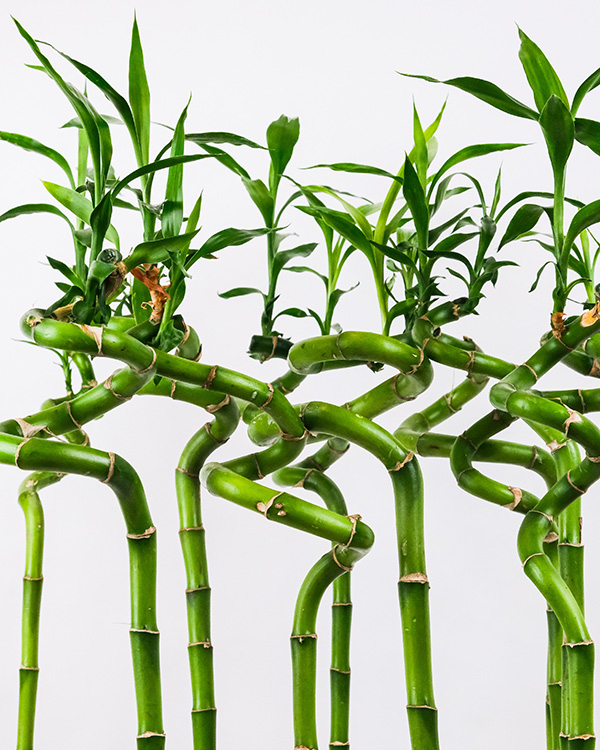
Lucky Bamboo, scientifically known as Dracaena sanderiana, is a top choice for a low-light houseplant, famed for its unique appearance and ease of care. This plant, with its iconic stalks and flexible growth patterns, brings a blend of modern style and traditional symbolism to any indoor space.
Excelling in indirect light, Lucky Bamboo is ideal for areas in homes that are not bathed in direct sunlight. Care for this plant is straightforward; it thrives in water or well-drained soil, needing only occasional watering to maintain its vigor. Additionally, it adapts well to various indoor temperatures and humidity levels. The combination of its adaptability to low-light conditions, minimal care requirements, and stylish appearance makes Lucky Bamboo a compelling choice for those seeking to add a touch of greenery and positive energy to their home environment.
Ponytail Palm
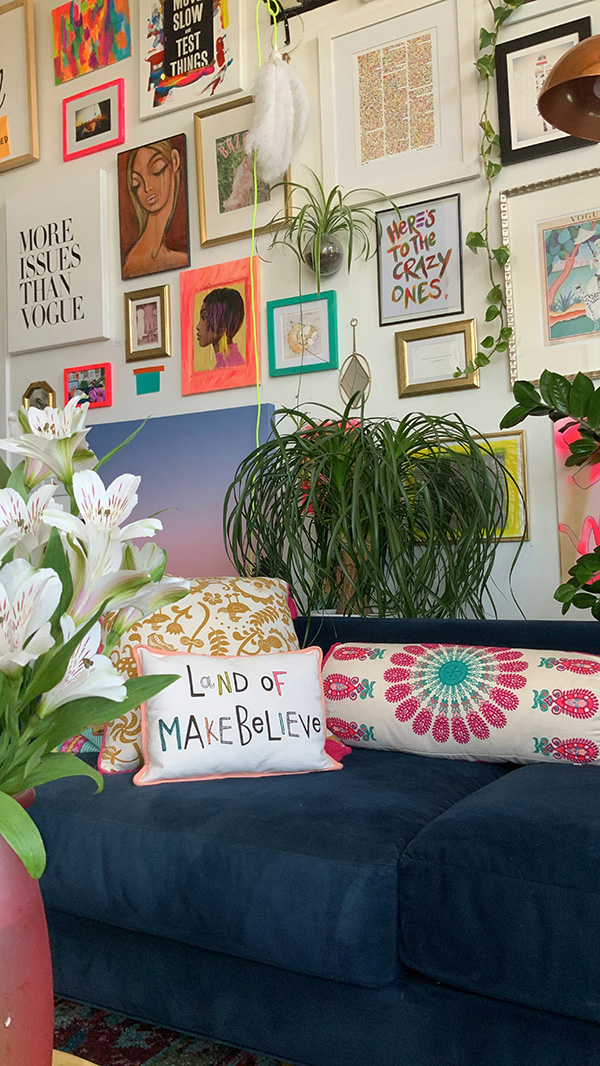
The Ponytail Palm, or Beaucarnea recurvata, is an exceptional choice for a low-light houseplant, renowned for its distinctive and whimsical appearance. This plant features a bulbous trunk and long, curly leaves that cascade like a ponytail, offering a unique aesthetic to any indoor space. Adapted to thrive in bright indirect light, the Ponytail Palm is well-suited for areas within homes that receive minimal direct sunlight.
In terms of care, this plant is remarkably low-maintenance. It thrives in dry conditions and necessitates watering only once the soil has completely dried out, showcasing tolerance to infrequent watering. The Ponytail Palm is also adaptable to average indoor temperatures. Its ability to flourish in low-light conditions, with its minimal care requirements and striking appearance, makes it a popular choice for adding a playful yet elegant touch to home interiors.
English Ivy

English Ivy, scientifically identified as Hedera helix, is an exceptional choice for low-light environments in home settings. This versatile plant thrives in areas where other species might struggle, making it ideal for spaces with limited natural light. Its adaptability to various indoor conditions and its air-purifying qualities position it as a practical and health-conscious addition to any room. English Ivy's lush, trailing vines bring a touch of nature's elegance indoors, effortlessly enhancing the aesthetic of living spaces.
Moreover, its ease of care, requiring minimal watering and maintenance, makes it a favorable choice for both seasoned plant enthusiasts and beginners. Its resilience and decorative appeal solidify English Ivy's status as a top contender among low-light houseplants.
African Violet
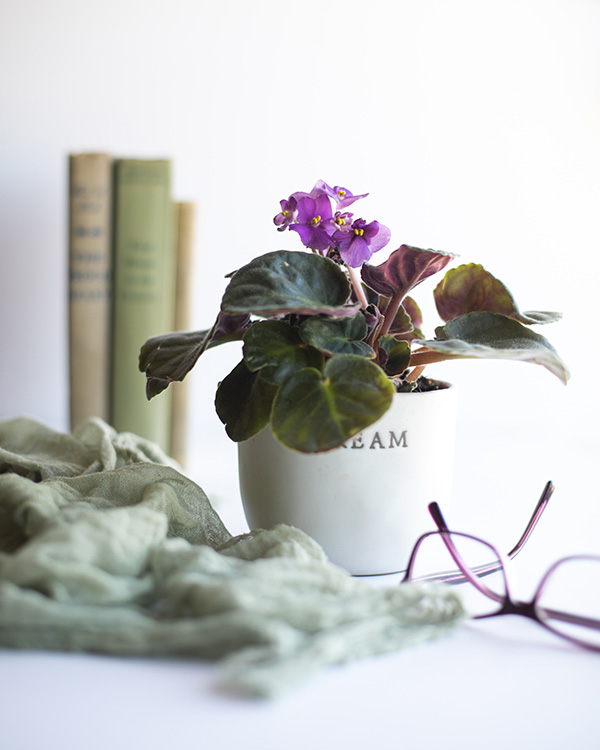
African Violets, scientifically known as Saintpaulia, are renowned for their compatibility with low-light indoor environments, making them an excellent choice for home gardeners. These plants flourish in bright indirect light, avoiding the common issue of leaf burn faced by many other houseplants.
African Violets are distinguished by their vibrant blooms and lush, velvety leaves, adding a splash of color and vitality to any space. Their compact size makes them ideal for small spaces like office desks or window sills.
Additionally, they have a reputation for being low-maintenance, requiring minimal watering and care, which is particularly appealing for busy homeowners or those new to plant care. The enduring popularity of African Violets can be attributed to their aesthetic appeal and adaptability to indoor living conditions.
Anthurium
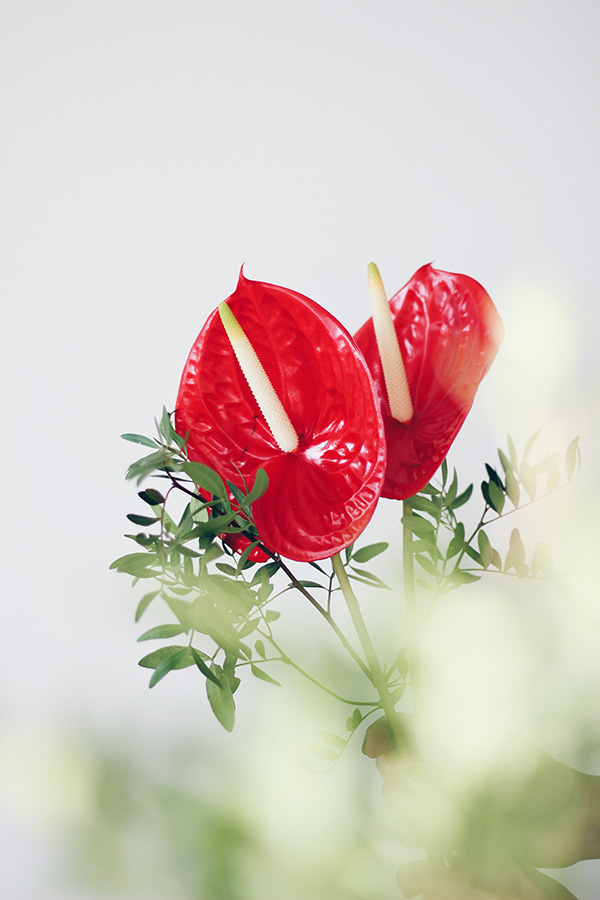
Anthurium, a tropical plant called the 'Flamingo Flower,' stands out as a prime choice for low-light houseplant enthusiasts. Excelling in environments with bright indirect light, it's particularly suitable for indoor areas lacking direct sunlight. This tropical plant is known for its eye-catching, heart-shaped blooms and glossy, dark green leaves, bringing a vibrant tropical aesthetic to any indoor setting.
Beyond its visual allure, Anthuriums are valued for their air-purifying qualities, enhancing the healthiness of home environments. Requiring moderate watering and minimal maintenance, these tropical plants appeal to those desiring both decorative appeal and practicality.
Prayer plant
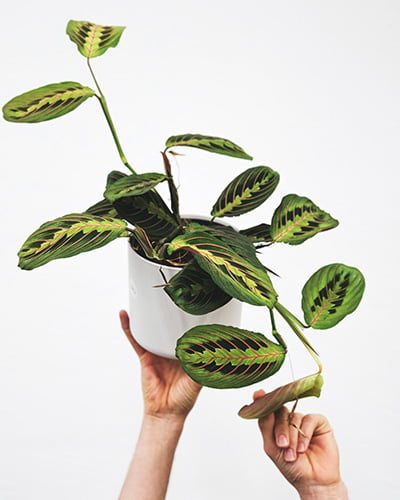
Source: Unsplash
The Prayer Plant, scientifically known as Maranta leuconeura, is a prime choice for a low-light houseplant, bringing dynamic beauty to any indoor space. Known for its striking leaf patterns and colors, this plant's leaves fold upwards in the evening, resembling hands in prayer, hence earning its name. Excelling in indirect light, the Prayer Plant is particularly suited for home areas that don't receive direct sunlight.
In terms of care, it thrives in well-drained soil and prefers moist soil without waterlogging. The plant also benefits from high humidity and appreciates regular misting. Adaptable to average indoor temperatures, its preference for low-light conditions and manageable care needs make the Prayer Plant a compelling addition, enhancing homes with its vibrant foliage and intriguing behavior.
